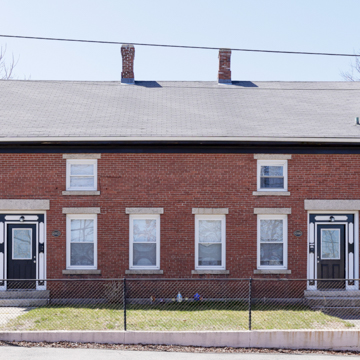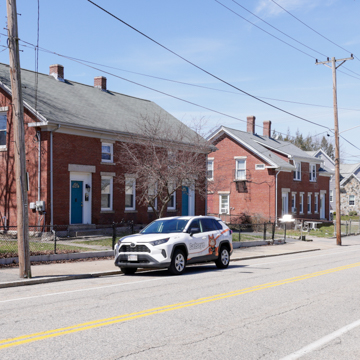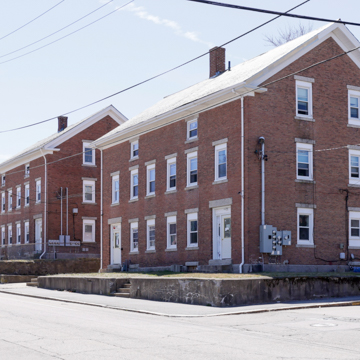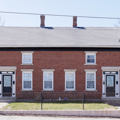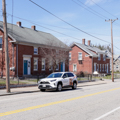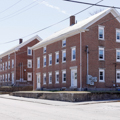The Harris Woolen Company built eighty of these units to provide housing for its workers in the Privilege Mill complex, which then existed at the foot of the hill. What remains is the finest extant mill housing for nonsupervisory workers in Woonsocket. The houses continue the tradition of the Federal vernacular type found at the earlier housing of the Globe Mills (
WO16), but in brick rather than wood. The granite foundations, the stone lintels over the windows, and the deep recesses of the doorways, lighted by very narrow transoms and side lights, reinforce the sense of solidity. They seem to depend on the Massachusetts tradition of brick mill housing that extended along the Blackstone River in Rhode Island and is today most vividly evident in Lonsdale, Berkeley, and Ashton (see under Cumberland). The six-bay houses that line both sides of Farm Street originally
To build his mill and housing, Edward Harris established his own brick kilns and sawmill on the site. Although buildings of the Privilege Mill complex still exist down the Farm Street hill, they are of later date or so altered that the crown of Harris's career can no longer be said to exist. The Privilege Mill is important, however, not only for its housing, but also because Harris specifically recruited his workers from French Canada, thereby initiating the influx of French Canadians into Woonsocket, although Irish apparently continued to predominate in his work force.














